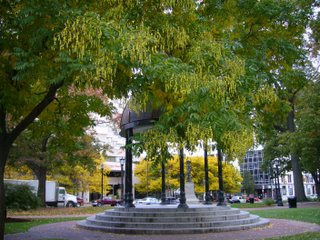The Scholartree
 For the past thirty years, I've been in search of a tree. A tree like the one in West Lafayette, Indiana, that I used to pass every day on my way to class at Purdue University. It grew on State Street in front of Matthew Hall, the Home Economics building.
For the past thirty years, I've been in search of a tree. A tree like the one in West Lafayette, Indiana, that I used to pass every day on my way to class at Purdue University. It grew on State Street in front of Matthew Hall, the Home Economics building.The tree was rather low and spreading, with compound pinnate leaves of a lovely bright green which stayed green long after all the surrounding trees had lost their leaves. In late summer, it had very fragrant clusters of white flowers all over, and in fall, long bright green pods like strings of beads. The lower branches looked perfect for climbing into with a book. I used to think, if I ever have a house, that's a tree I would like to plant in my yard.
Plants on the campus of my undergraduate college all wear labels identifying them. Smith is a registered botanical garden. But the Purdue trees are unlabelled, and noone I asked knew anything about them. I graduated without ever learning the name of my special tree.
Back home in Massachusetts, and at various times and places over the next thirty years, I tried to identify the tree. I went to the library and took out books on native species. I described the tree to landscapers. I kept an eye out for a similar tree wherever I went. (The various locust species are similar, but none have the pods like necklaces.)
This afternoon I was walking in my neighborhood, and what did I spot but "my" tree, growing right in Court Square. I realized that today--with the Internet--I could probably find anything. I ran home and did a few minutes searching, and there it was. Sophora japonica, or Styphnolobium japonicum, the Chinese scholartree or pagoda tree.
Sophora japonica is a native of China, hardy and disease-resistant. It tolerates city conditions well. The name pagoda tree makes sense, if you look at the shapes of the cascades of seed pods. And scholartree? I don't know the origin of that. But the appellation seems serendipitous, given that I first discovered the tree on the campus of a university.


0 Comments:
Post a Comment
<< Home